
|
|
From the Editor - May 2022
Here in British Columbia, the weather has more or less settled into the usual Spring pattern - periods of rain interspersed with some clear periods. Generally speaking, temperatures are a bit above average, leaving us with the continuing worry of a low mountain snow-pack which has significant implications for our summer water supply and the well-being of our fish resources.
The one thing that they’ve made crystal clear is that for them, “freedom” doesn’t mean adherence to the principles of democracy or the rule of law - by demanding the unconstitutional “removal” of sundry high-ranking elected officials and the arbitrary tossing-out of duly-promulgated and widely-supported legislation in the absence of due process, they’ve unmistakably nailed their colours to the mast of the good ship “Anarchy” as opposed to democracy. If they think (as they keep saying) that they’re living in a dictatorship, I urge them to move to Russia, Afgahnistan or North Korea …………… Understandably, the vast majority of their fellow citizens have little time for these tiresome morons - other more important concerns have rather overshadowed the “freedumb” agenda. These include the appalling ongoing human disaster of the Russian invasion of Ukraine; the growing realisation that we’re moving rapidly towards becoming victims of political and societal paralysis on the brink of climate catastrophe; and the continuing assault upon our collective well-being from the Covid virus. The government policies of abandoning any pretence of trying to manage the threat and under-reporting case numbers, long-term consequences and deaths from this cause are doing nothing to inspire confidence.
Even so, despite the now-endemic Covid-19 situation and the ongoing societal dysfunction, a significant number of folks are clearly remaining very much engaged with our hobby. Confirmation comes from the fact that the mail box has remained quite active. I heard from quite a few of you during April, including (in no particular order) Luis Petersen, Gordon Beeby, David Burke, Ken Croft, Peter Valicek, Miles Patience, Chris Boll, Maris Dislers, Andrew Boddington, Dave Zwolak, Amadeus Kurz, Kelley Crozier, Bill Schmidt, Larry Davidson, Steve Todd, Bill Wells, Alan Strutt, Goran Milosavljevic, Chris Stoddart, Brian Hampton, Dave Hill, Chris Murphy, Nigel Tarvin, Allan Brown, Bjørn David-Andersen, Mike Conner, Hugh Blowers, Michel Rosanoff, Paul Smigelski and Neill McRae. Apologies to anyone whom I may have inadvertently missed in the crowd, and apologies also to anyone whose message(s) went unanswered - things do slip through the cracks, especially when I’m distracted! The blog site has continued to justify its existence by contributing a small but steady flow of relevant traffic - thanks for that.
This turned out to be an example of perhaps the rarest Australian Elfin 149 replica of them all - Steve Todd Elfin replica no 3-A, one of a batch of four such diesels which Steve made in early 2022 using original all-Australian Doonside Elfin components. The A signifies that the engine has an original O-ring aluminium alloy contra piston which was being developed by Ivor F back in the day but was not used at that time. Needless to say, I was quite overwhelmed by Steve’s generosity! I will treasure this gift from a very talented model engineer and a good friend.
I mentioned last month that a few years back I had taken over custody of a large stash of components for the famous British Nordec 60 engines from my valued mate Alan Strutt. These were saved by a friend of Alan's when the factory ended model engine production over 70 years ago now. I mentioned that I still have these components and am happy to make them available to any Nordec owner at no charge other than the cost of mailing. I'd far rather see them put to use than end up in the recycling bin! I’ve been contacted already by a few individuals asking if I have certain minor components such as Woodruff keys and needle valves. Sadly, what I have is mostly major components - the smallest components that I have are piston rings and gudgeon (wrist) pins. I’ve gone through the stash and developed a listing of what I do have. A link to this list has been added to my separate page on “Engine Parts Available”. The list includes all of the parts that I have. I must admit that when it comes to the acquisition of model engines, I’ve developed a bit of a tendency to take the occasional flier. I’ve stopped adding indiscriminately to my over-bloated collection - disposal of what I already have will be a quite sufficiently high mountain to climb down the road! The only new acquisitions that I go after nowadays are either those which have the potential to contribute meaningfully to articles on my website or which simply pose a puzzle which I just can’t resist investigating!
A second and seemingly earlier example with a tank subsequently came my way courtesy of my valued English mate Alan Strutt. The eBay engine is at the front left in the accompanying view. It seems that the engine’s constructor was sufficiently serious about the project to undertake its development through the creation of at least one test prototype before bringing it to the point where he was sufficiently satisfied to attach a name to it. The fact that the engines both use BA threaded fasteners and nominal Imperial dimensions throughout strongly suggests a British origin. I’ve added the GLOGO to my Wotizit pages. If any reader has any knowledge of the antecedents of these engines, please get in touch!! Meanwhile, I plan to undertake a limited test of these fascinating creations!
I already had a listing for these “T” engines in my Wotizit pages, and have accordingly added Maris’s images to that listing. All that we know for sure is that these are not Taipan products manufactured in Australia by Gordon Burford. If any reader can enlighten us as to their origin, please get in touch!
But wait - there’s more! Over the years, a guy like me attracts a lot of questions on all kinds of topics relating to model engines of the “classic” era. One such topic is the production history and composition of the many and various model engine fuels which were commercially available in Britain during that period. People see these fuels referred to by name in published engine tests or advertisements of the period and wonder what was in them. This interest is entirely understandable, since their composition could have exerted a considerable influence upon the published test results.
In the interests of minimising the need for such inquiries in the future, I’ve joined forces with my ever-helpful Aussie colleague Gordon Beeby to dig deep into the subject of commercial British fuels of the “classic” era. Gordon conducted an exhaustive literature search for such information as was available, and I’ve developed his findings into what I hope will be found to be a comprehensible illustrated narrative covering this topic. This is offered as this month’s bonus article. Gordon and I sincerely hope that at least some of you find it to be of interest!
The Elfin BR models were not great successes in marketing terms. For various reasons they became viewed somewhat negatively during their relatively short production lifetimes. However, they were very interesting out-of-the-box designs which could be made to perform very well. Their main shortcoming was a certain inconsistency in terms of quality, a problem which arose chiefly because they were made using clapped-out WW2 machine tooling which the manufacturer, Aerol Engineering Ltd., couldn’t afford to replace. Full details coming up in the revised article!
I think that about does it for this edition. All being well, I'll be back to you with another edition on or about June 1st, 2022. Meanwhile, please accept my best wishes for continuing the process of learning to live with the now-endemic Covid threat and the accompanying societal dysfunction to get the best of what life has to offer under present circumstances. Take care and stay well - don’t support the anarchist “freedumb” crowd, minimize your contact with the covidiots, get vaccinated to the max, continue to exercise discretion and trust your own informed opinions rather than those of the covidolts and the demoscrappers. Their focus is entirely on themselves, not on you - ignore them, make up your own mind based on authoritative current information and act accordingly! It’s your future and that of your kids and grandkids .……….don’t let others decide it for you and for them! Cheers, Adrian Duncan British Columbia, Canada ___________________________________ Note regarding material to be found on this site - unless specifically otherwise noted, all images and text which appear on this site are my own work, and I hereby assert my right to be recognized as the originator of this material. For the record, this material is made freely available to all upon two firm conditions:
Adrian C. Duncan British Columbia, Canada |
| |
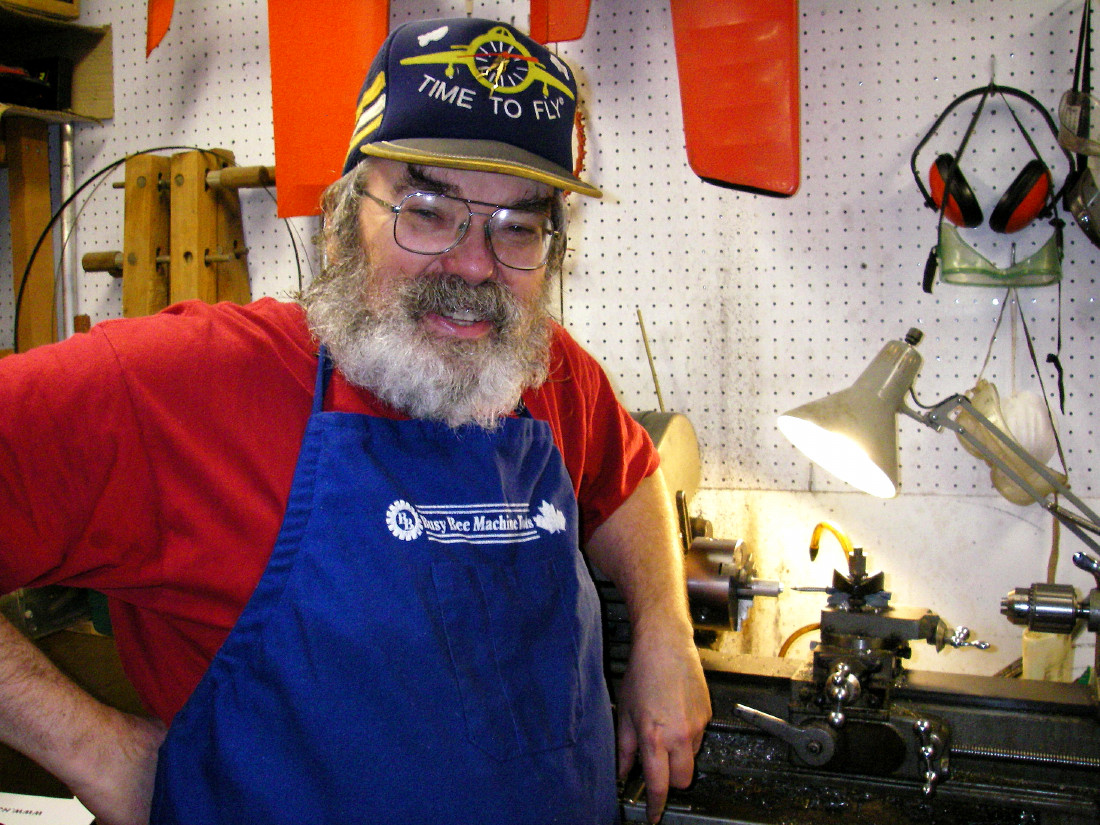 Hooray, hooray, the first of May, as the old chant of my long-ago schooldays began! However, it was a little easier to chant this with true feeling and dance happily around the metaphorical Maypole back in the innocent days of youth than it is in the far more precarious state of affairs prevailing today. No wonder that old guys like me look back to those days with such pleasure! I’m immensely grateful to have had the opportunity to experience them. At times, being old is a blessing to be counted…………….
Hooray, hooray, the first of May, as the old chant of my long-ago schooldays began! However, it was a little easier to chant this with true feeling and dance happily around the metaphorical Maypole back in the innocent days of youth than it is in the far more precarious state of affairs prevailing today. No wonder that old guys like me look back to those days with such pleasure! I’m immensely grateful to have had the opportunity to experience them. At times, being old is a blessing to be counted…………….  The Freedumb protests are continuing in various parts of Canada, although some of the wind seems to have gone out of their sails as the Covid restrictions disappear. They no longer seem to know what they want - they just waffle on about “freedom” without defining what that means. Their total ignorance is perhaps best exemplified by the Facebook poster who seriously wondered how long it would be before Europeans desperate to escape tyrannical rule in Europe would start flooding over the southern US border ............
The Freedumb protests are continuing in various parts of Canada, although some of the wind seems to have gone out of their sails as the Covid restrictions disappear. They no longer seem to know what they want - they just waffle on about “freedom” without defining what that means. Their total ignorance is perhaps best exemplified by the Facebook poster who seriously wondered how long it would be before Europeans desperate to escape tyrannical rule in Europe would start flooding over the southern US border ............ For now, I’m doing my best to carry on even in the face of these deeply troubling developments, although I confess to finding it to be a growing challenge. It really does help to know that there’s still a continued interest in model engines among my valued readers - that’s what keeps me going! Unfortunately, my statistics reporting system still appears to be haywire - it’s reporting far higher levels of visitation than I can bring myself to believe. My IT guys have been looking at it, so far without a resolution - to them, the numbers look legit. All I can say is that there's clearly plenty of interest being shown!
For now, I’m doing my best to carry on even in the face of these deeply troubling developments, although I confess to finding it to be a growing challenge. It really does help to know that there’s still a continued interest in model engines among my valued readers - that’s what keeps me going! Unfortunately, my statistics reporting system still appears to be haywire - it’s reporting far higher levels of visitation than I can bring myself to believe. My IT guys have been looking at it, so far without a resolution - to them, the numbers look legit. All I can say is that there's clearly plenty of interest being shown! 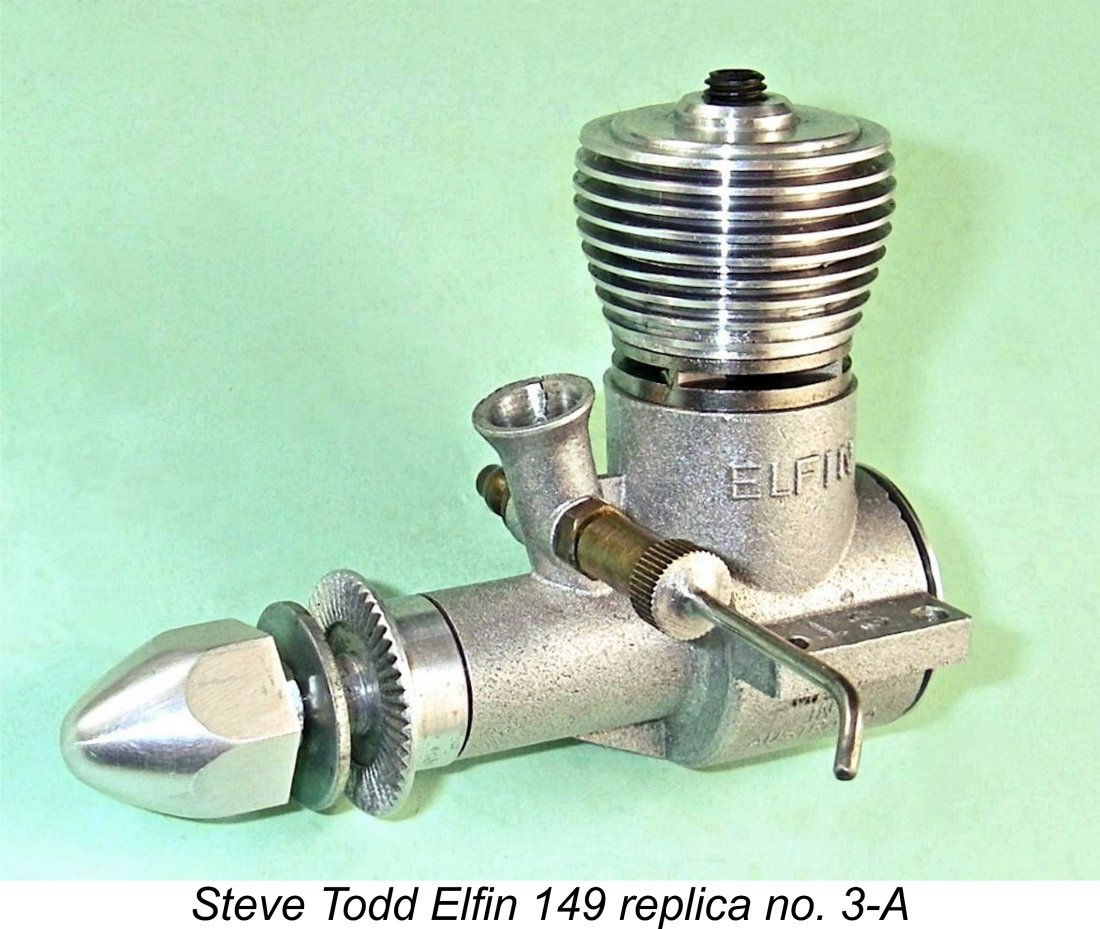
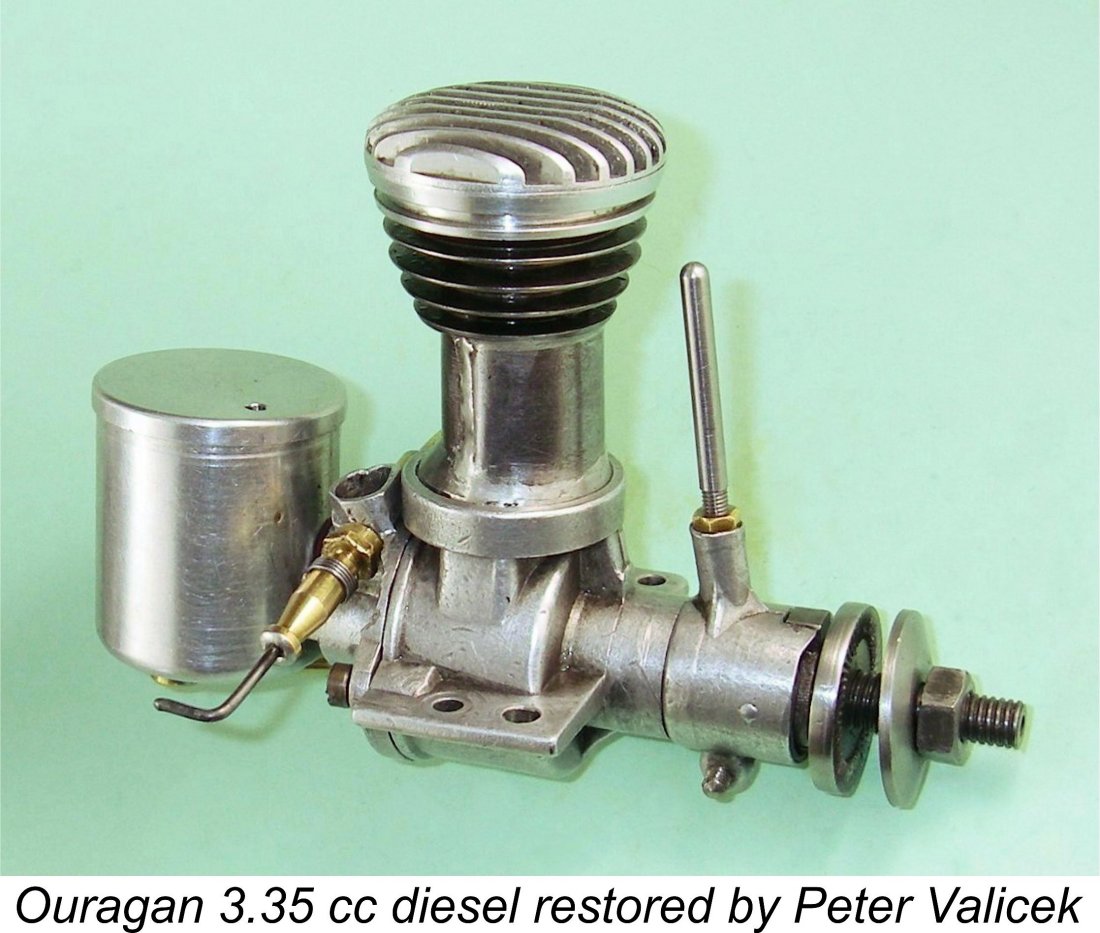 I also received a wonderful package from my valued mate Peter Valicek of the Netherlands, who had kindly undertaken some restoration work for me. Among the items received was a superbly restored example of the very rare Ouragan 3.36 cc drum valve diesel from 1946 France. It was accompanied by a fine example of the sideport version of the same engine which I had acquired earlier through Peter’s good graces. These engines will form the basis for a future article on this very interesting model engine series. It’s difficult to adequately convey my appreciation of Peter’s talents and kindness!
I also received a wonderful package from my valued mate Peter Valicek of the Netherlands, who had kindly undertaken some restoration work for me. Among the items received was a superbly restored example of the very rare Ouragan 3.36 cc drum valve diesel from 1946 France. It was accompanied by a fine example of the sideport version of the same engine which I had acquired earlier through Peter’s good graces. These engines will form the basis for a future article on this very interesting model engine series. It’s difficult to adequately convey my appreciation of Peter’s talents and kindness!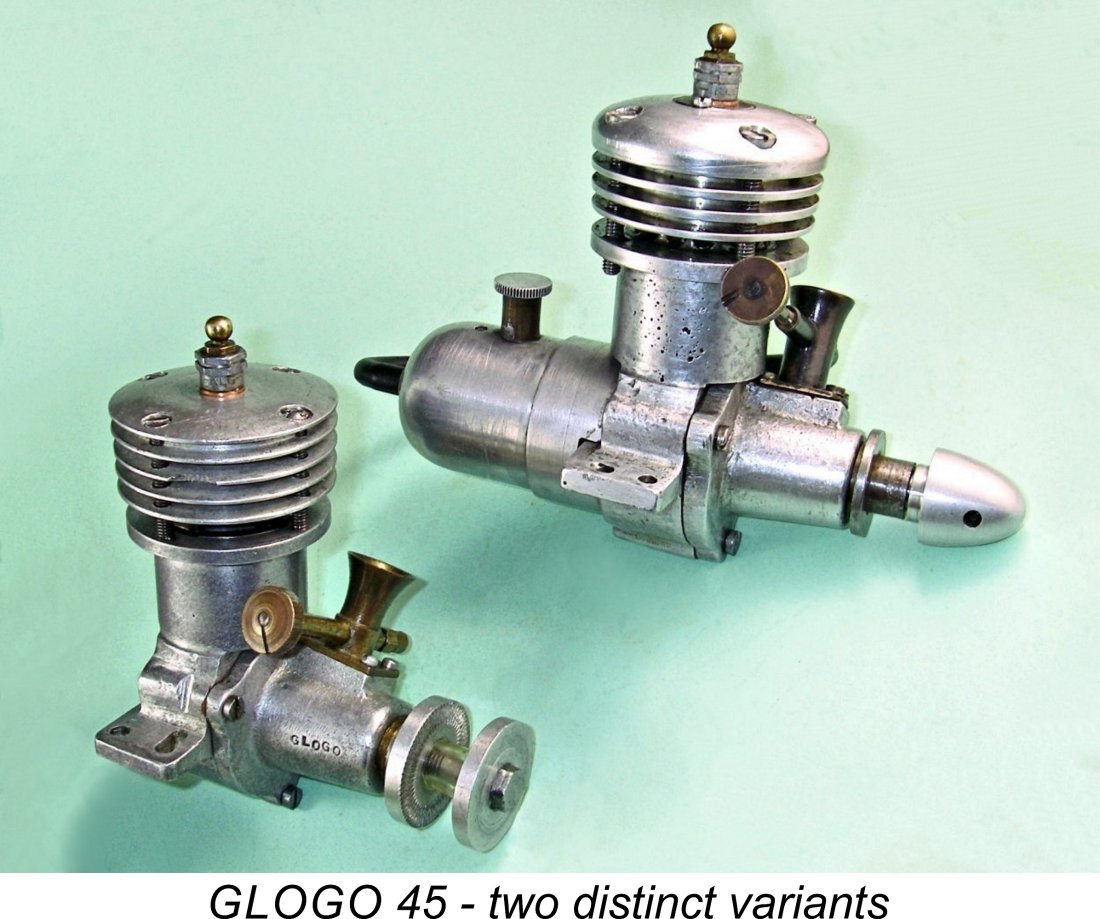 Just such an engine recently came my way. In March 2022 I stumbled across an eBay offering of a self-identified glow-plug engine of which I’d never heard - a fairly rare occurrence! This was clearly identified on the case in two locations as a GLOGO unit, a name completely unfamiliar to me. Accordingly, this engine is not a Wotizit - it’s a Whenwuzzit, Wherewuzzit and Whodunnit! This engine fell squarely into the “puzzle” camp, prompting me to buy it.
Just such an engine recently came my way. In March 2022 I stumbled across an eBay offering of a self-identified glow-plug engine of which I’d never heard - a fairly rare occurrence! This was clearly identified on the case in two locations as a GLOGO unit, a name completely unfamiliar to me. Accordingly, this engine is not a Wotizit - it’s a Whenwuzzit, Wherewuzzit and Whodunnit! This engine fell squarely into the “puzzle” camp, prompting me to buy it.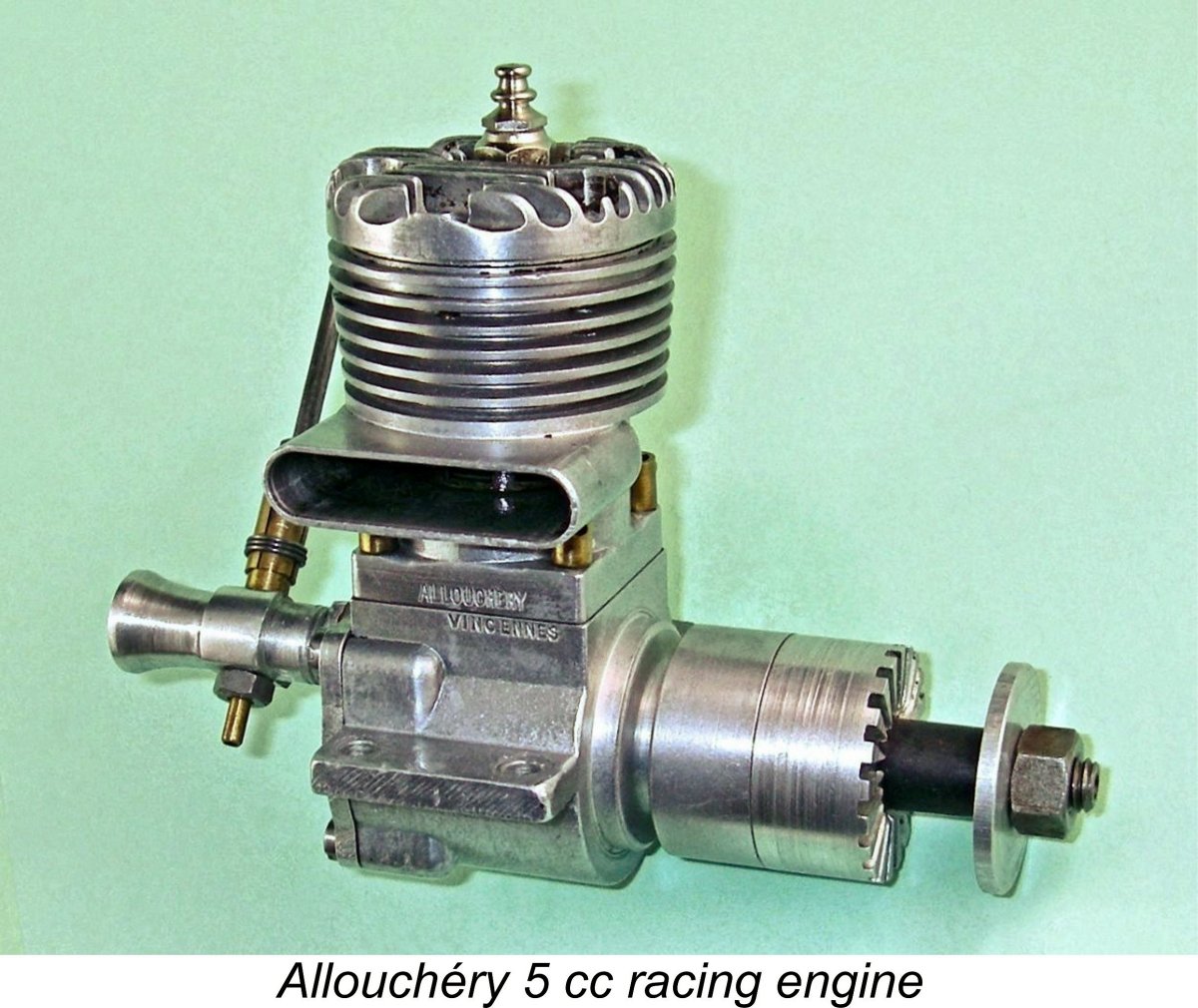 It’s always a pleasure to receive feedback from a knowledgeable source following the publication of one of my articles! During April I heard from my friend and colleague Michel Rosanoff of France, who was able to provide some very useful information in connection with last month’s feature article on the
It’s always a pleasure to receive feedback from a knowledgeable source following the publication of one of my articles! During April I heard from my friend and colleague Michel Rosanoff of France, who was able to provide some very useful information in connection with last month’s feature article on the 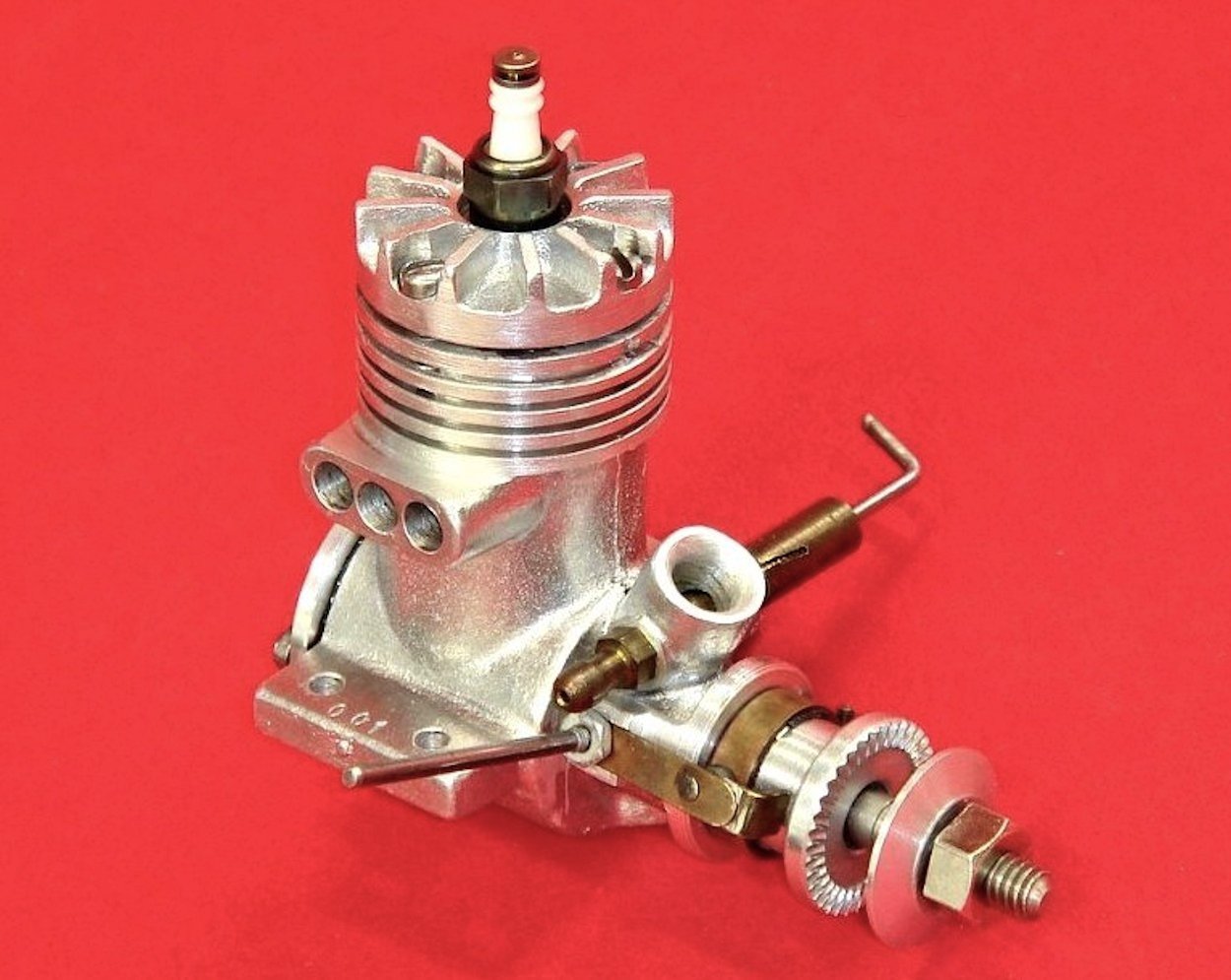 Another good friend who contacted me during April was Maris Dislers of Australia, who sent me a couple of images of a nicely-made .09 cuin. sparkie of unknown origin. The only identification was the letter “T” cast onto the bypass. The engine bore the serial number 001, indicating that a small series must have been constructed or at least envisioned.
Another good friend who contacted me during April was Maris Dislers of Australia, who sent me a couple of images of a nicely-made .09 cuin. sparkie of unknown origin. The only identification was the letter “T” cast onto the bypass. The engine bore the serial number 001, indicating that a small series must have been constructed or at least envisioned. Turning now to this month’s lead article, this edition is a little unusual in that both of the featured engine articles relate to the same subject! Taking the MEN transfer article first for once, I’ve presented an update of my earlier piece on the subject of the
Turning now to this month’s lead article, this edition is a little unusual in that both of the featured engine articles relate to the same subject! Taking the MEN transfer article first for once, I’ve presented an update of my earlier piece on the subject of the  The all-new article relates directly to the above topic, since it consists of an in-depth review and test of the
The all-new article relates directly to the above topic, since it consists of an in-depth review and test of the 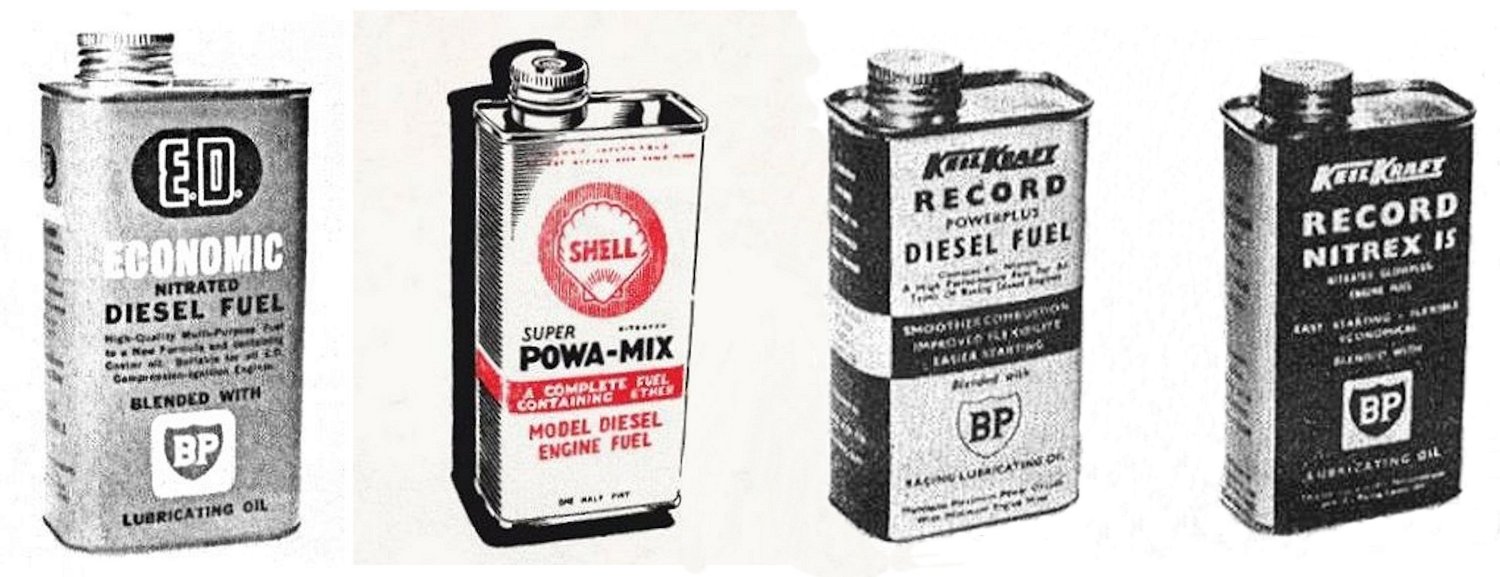 Typically, people seem to want to know what constituents were included in a given blend and in what proportions they were included. The issue of fuel composition is far from clear-cut - for obvious reasons, competitive pressures induced fuel manufacturers to play their cards close to the chest when it came to releasing the specifics of their commercial fuel formulations. Moreover, fuel compositions tended to change over time. Nonetheless, some details did leak out periodically.
Typically, people seem to want to know what constituents were included in a given blend and in what proportions they were included. The issue of fuel composition is far from clear-cut - for obvious reasons, competitive pressures induced fuel manufacturers to play their cards close to the chest when it came to releasing the specifics of their commercial fuel formulations. Moreover, fuel compositions tended to change over time. Nonetheless, some details did leak out periodically.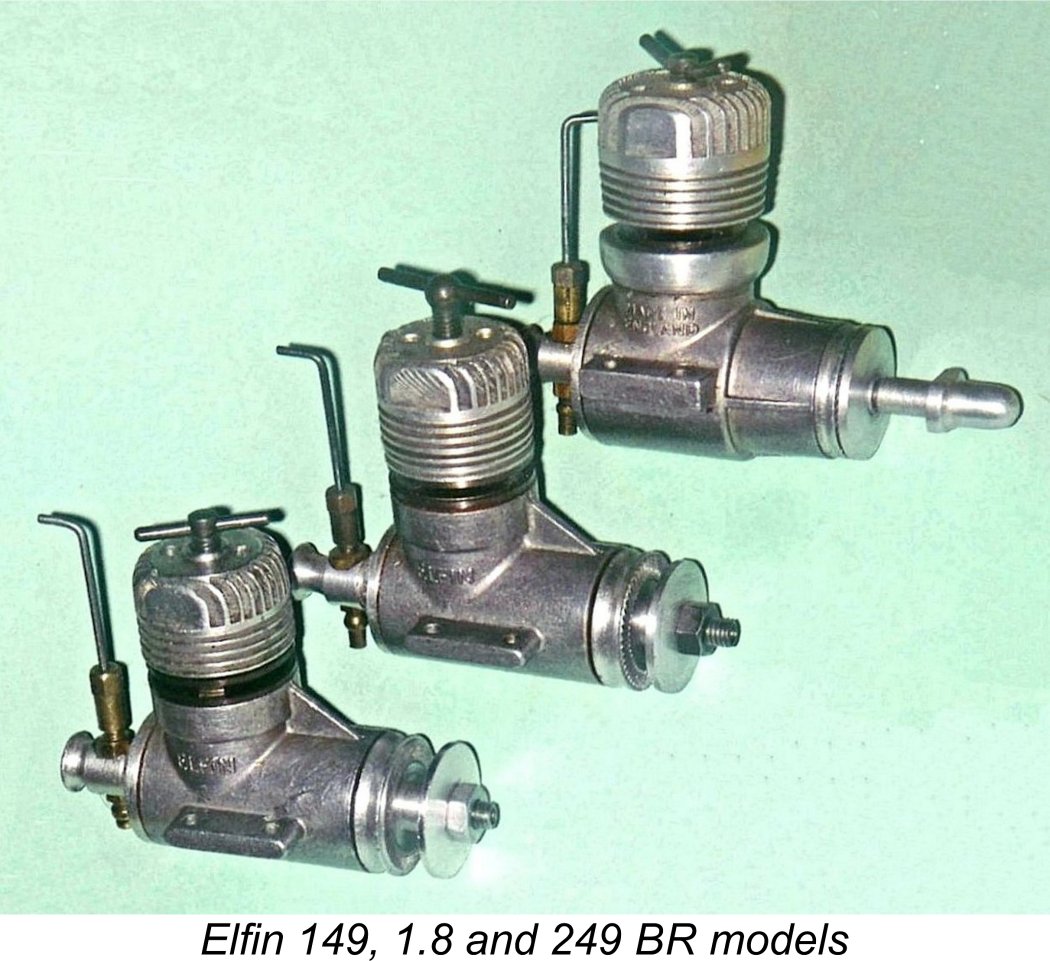 For the second month in a row, the two articles planned for next month will both deal with the same engines, albeit from different perspectives. The MEN transfer article will be an updated re-draft of my earlier article on the Elfin reed valve ball-race models. This article first appeared on MEN in February 2010. The revised article will be relatively little changed, but the illustrations will be enhanced in both quality and quantity.
For the second month in a row, the two articles planned for next month will both deal with the same engines, albeit from different perspectives. The MEN transfer article will be an updated re-draft of my earlier article on the Elfin reed valve ball-race models. This article first appeared on MEN in February 2010. The revised article will be relatively little changed, but the illustrations will be enhanced in both quality and quantity. 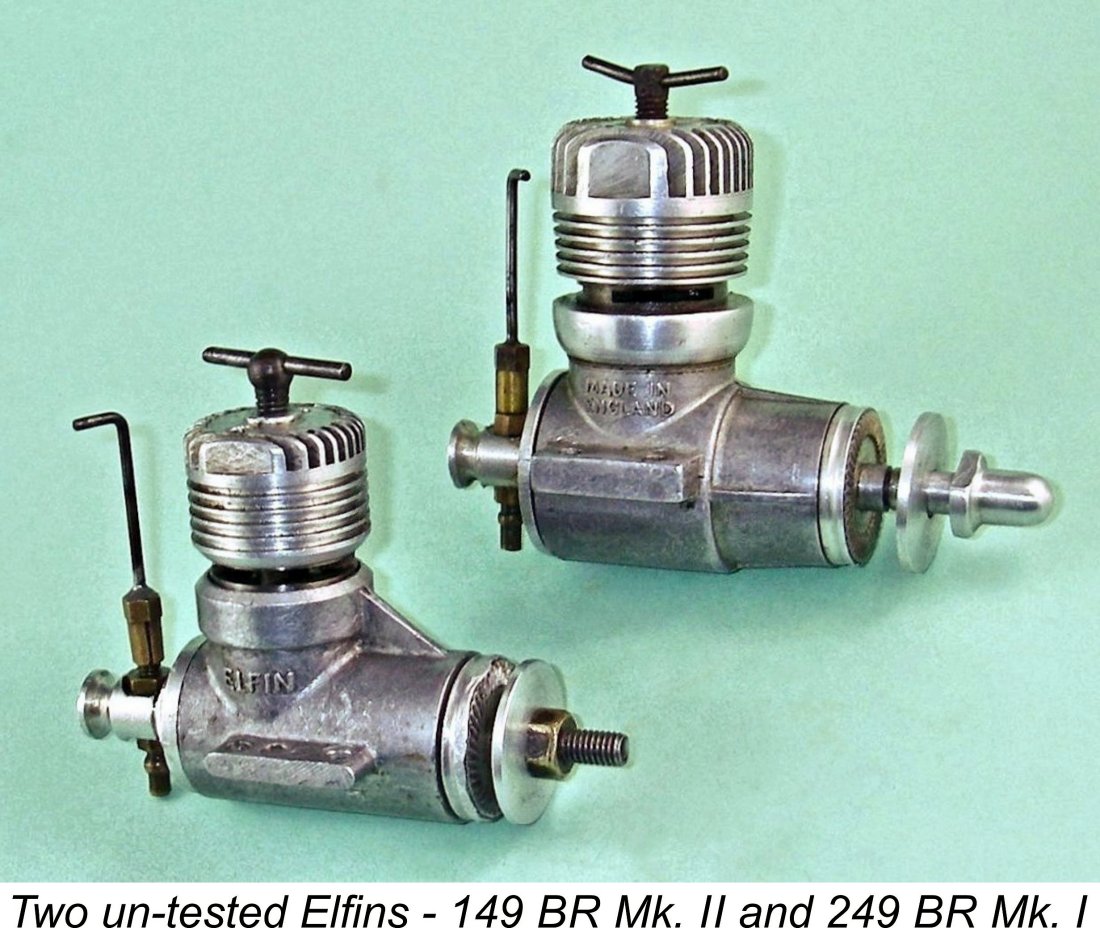 While several of these unusual engines were the subjects of published tests during their manufacturing periods, two of the more significant members of the series were never tested back in the day, resulting in a measure of controversy surrounding their respective performances. Next month’s all-new article will remedy that deficiency by including tests of the Elfin 249 BB Mk. I and the Elfin 149 BB Mk. II. I’ve also taken the opportunity to discuss several approaches to reed replacement in these engines - a fairly common requirement. I think that the results achieved may surprise you - they certainly surprised me!!
While several of these unusual engines were the subjects of published tests during their manufacturing periods, two of the more significant members of the series were never tested back in the day, resulting in a measure of controversy surrounding their respective performances. Next month’s all-new article will remedy that deficiency by including tests of the Elfin 249 BB Mk. I and the Elfin 149 BB Mk. II. I’ve also taken the opportunity to discuss several approaches to reed replacement in these engines - a fairly common requirement. I think that the results achieved may surprise you - they certainly surprised me!!